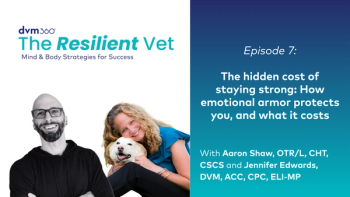
One Health and Antimicrobial Resistance
In a recent One Health lecture, Dr. Laura Kahn talked about antibiotic use in food animals, the challenges of ensuring food security, and possible sources of antibiotic resistance in people.
In a lecture at Iowa State University College of Veterinary Medicine on March 21, Laura Kahn, MD, MPH, MPP, discussed the implications of antibiotic use in food animals, the challenges of ensuring food security while protecting the environment, and potential sources of antibiotic-resistant infections in humans.
One Health is the concept that human, animal, and environmental health are linked, said Dr. Kahn, a research scholar at Princeton University.
“Because they are linked, issues such as antimicrobial resistance must be analyzed using an interdisciplinary One Health approach,” she said.
[Click
Dr. Kahn began by discussing the historical reasons for antibiotic use in food animals. Both medicine and agriculture became dependent on antibiotics during the 20th century, she said. Researchers discovered that low-dose antibiotics increased growth in food animals during experiments with alternative growth promoters after World War II. The war disrupted supply chains of fishmeal and cod liver oil, which had previously been used as protein sources for livestock. Studies showed that vitamin B12 supplementation dramatically increased the growth rates of piglets and chicks, and further tests revealed that the increase was due not to the vitamin itself but to residues of chlortetracycline used to produce the vitamin.
Growth promoters in food animals have contributed to the relative decrease in the price of food in the United States since the war, said Dr. Kahn. She pointed out that the average percentage of disposable income spent on food in the United States has dropped from 25% after the war to 10% now. “Our entire consumer economy depends on relatively inexpensive food,” she said, pointing out that the food security of a population is linked to health and national security.
Global climate change is a critical threat to agriculture, she went on, explaining that unstable weather threatens crop production. One of the challenges for governments in the 21st century will be ensuring food security for growing populations without damaging the planet’s ecosystems.
Dr. Kahn used vancomycin-resistant Enterococcus faecium (VRE) to illustrate the differences between Europe and the United States and the potential difficulty in identifying the sources of resistant infections. Avoparcin, an antibiotic related to vancomycin, was once widely used as a livestock growth promoter in Europe. The European Union banned its use in 1997 after VRE was found in chicken and pig feces. After the avoparcin ban, the incidence of VRE on European farms declined, but human VRE infections in hospitals increased. Dr. Kahn noted that the use of vancomycin to treat humans could be related to VRE in hospitals.
In the United States, VRE first appeared in human hospitals in the 1990s, said Dr. Kahn. Avoparcin was never approved for use in livestock in the United States, and tests have shown no evidence that VRE originated in livestock in this country. However, vancomycin is commonly used to treat humans here, she said.
If the avoparcin ban in Europe reduced VRE in livestock but not in humans, and if VRE in the United States did not originate in livestock, asked Dr. Kahn, where did it come from? She said that finding the answer requires genome sequencing.
Genetic analysis has revealed a VRE precursor from a previously unexpected source, she said: ampicillin-resistant E. faecium in dogs. Dr. Kahn cited 2 studies that revealed resistant E. faecium isolates in apparently healthy dogs. She noted that the VRE precursors isolated from dogs are genetically related to the VRE strains endemic in human hospitals.
“Antibiotic resistance in pets is potentially an important hidden source of resistance in humans,” concluded Dr. Kahn. Surveillance for antimicrobial resistance requires sequencing microbial genomes and should include pets, she said.
[Click
Dr. Laurie Anne Walden received her doctorate in veterinary medicine from North Carolina State University. After an internship in small animal medicine and surgery at Auburn University, she returned to North Carolina, where she has been in small animal primary care practice for over 20 years. Dr. Walden is also a board-certified editor in the life sciences and owner of Walden Medical Writing, LLC. She works as a full-time freelance medical writer and editor and continues to see patients a few days each month.
Newsletter
From exam room tips to practice management insights, get trusted veterinary news delivered straight to your inbox—subscribe to dvm360.




